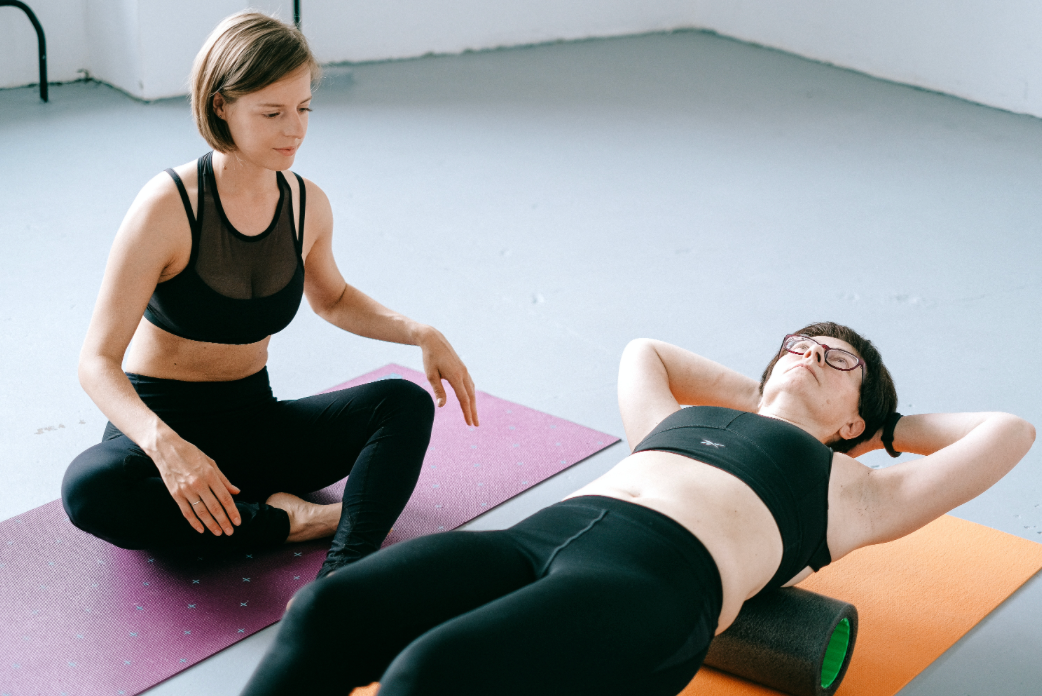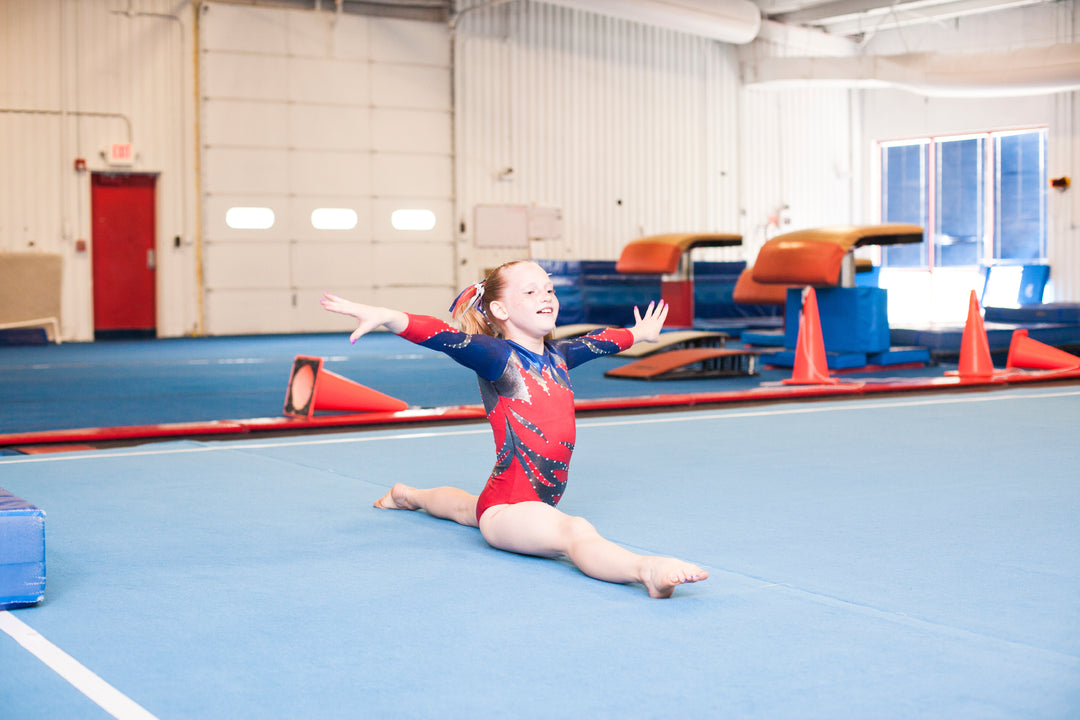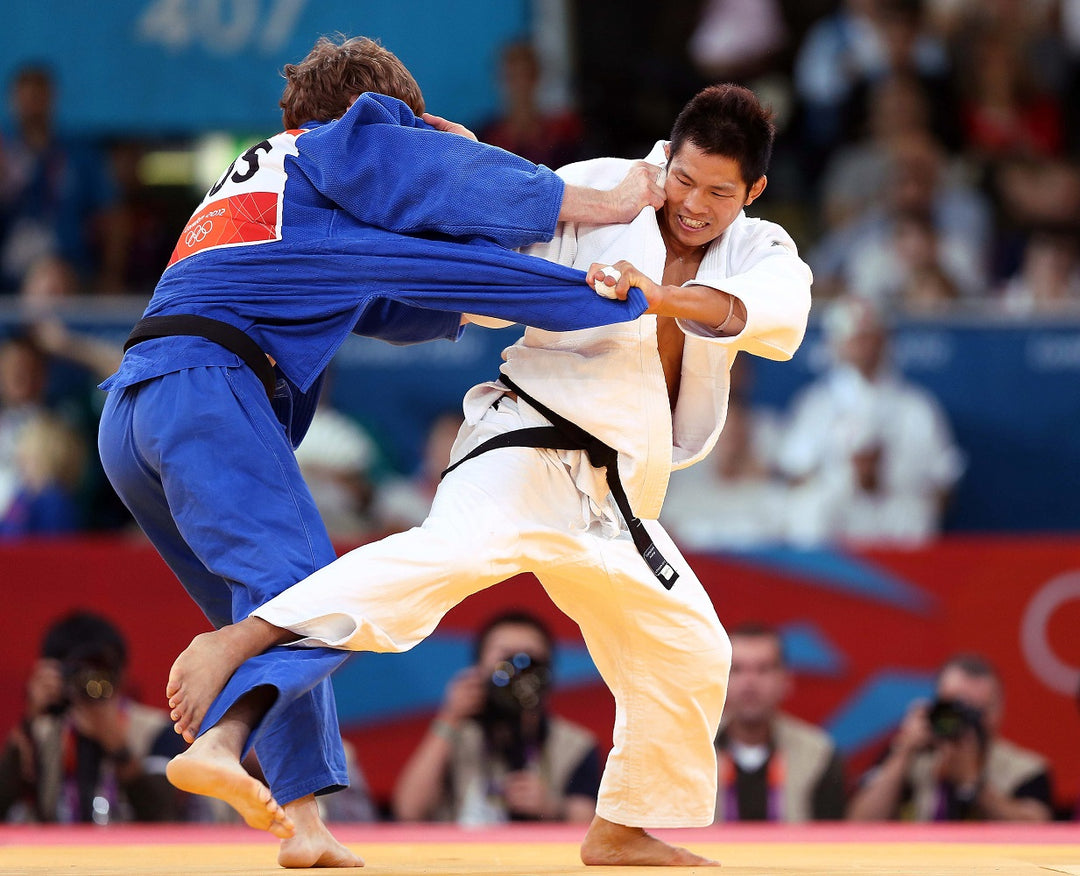How To Crush Stress With Yoga in 2024
As we welcome the new year of 2024, it's important to focus on personal growth, wellness, and effective stress management. Yoga offers a holistic approach to managing stress, promoting balance between the mind, body, and spirit. It combines mindfulness, meditation, controlled breathing, and physical poses to alleviate stress, enhance relaxation, and improve overall well-being.
Ignoring stress can lead to serious health issues such as heart disease, diabetes, depression, and a weakened immune system, as well as decreased productivity, strained relationships, and reduced quality of life. However, by integrating yoga into our daily routine, we can navigate the complexities of life in 2024 with calm and resilience. This practice, which requires minimal yoga equipment, is a powerful tool for stress management. Through this blog, we'll explore different yoga techniques that can be used to lead a healthier, happier, and stress-free life.
The Benefits of Yoga for Stress Relief
Yoga is an effective way to manage stress in 2024 and beyond. At its core, the practice of yoga is focused on connecting the breath and body with intention, leading to a greater sense of relaxation and overall well-being. It teaches techniques for coping with the stresses of life. It can be practiced in a variety of ways with or without props such as yoga mats. The physical practice of yoga helps to tone and strengthen the body, whilst also improving flexibility and balance. Through breathing exercises and meditation, yoga helps to reduce levels of stress, anxiety and depression. It encourages awareness and balance in your life and with regular, consistent practice yoga can become an essential tool in maintaining physical and mental health. For everyone looking to reduce stress in their lives, yoga is a great option. It can be conveniently practiced at home or in a class, and the props and tools needed such as yoga mats are widely available.
Equipment Needed
Yoga is a practice that requires minimal equipment, but the right tools can significantly enhance your experience and help you get the most out of each session.
Starting with yoga mats, they are an essential part of any yoga practice. They provide cushioning for your body and prevent slipping during poses. There are various types of yoga mats, including traditional PVC mats and eco-friendly cork mats. PVC mats are generally more affordable and offer excellent grip and durability. On the other hand, cork mats are sustainable, naturally antimicrobial, and offer a superior grip when wet, making them an excellent choice for hot yoga or those who sweat a lot.
Pilates rings, though not traditionally used in yoga, can be incorporated into your practice to add resistance and strengthen specific muscle groups. They can be used to tone arms, legs, and core muscles while promoting better posture and flexibility.
Yoga blocks are another versatile tool that can enhance your practice. They provide support and stability, allowing you to reach deeper into your stretches and maintain proper alignment. They are particularly beneficial for beginners and those with limited flexibility.
A yoga wheel is a relatively new piece of equipment that can help deepen your stretches, improve balance, and increase flexibility. It can also aid in performing challenging backbends and inversions.
Yoga socks, typically designed with non-slip grips, are great for providing extra traction and preventing slips during your practice.
As for what equipment to recommend for different levels of yoga, beginners might find yoga blocks and a good-quality mat helpful for building their practice. As they advance, tools like the yoga wheel and Pilates ring can be introduced for more challenging poses and strength-building exercises.
The ideal yoga equipment aligns with your unique practice, supports your journey on the mat, and aids in stress reduction. Choose what resonates with your needs and enhances your path toward mindfulness and serenity.
Setting Stress-Free Intentions for 2024
As we enter 2024, it's the perfect time to reflect on our stressors and set intentions for a more peaceful, less stressful year. Yoga, with its focus on mindfulness and intention setting, can be a powerful tool in this journey. When practicing yoga, each pose and breath is an opportunity to set a new intention or reaffirm an existing one. This allows us to connect our physical practice with our mental and emotional well-being.
Start by identifying your stressors. What are the things that cause you the most stress? Once you've identified these, you can start to set intentions on how you will manage these stressors in the new year. Perhaps it's through more regular yoga practice, or maybe it's through incorporating more mindfulness techniques into your day.
Next, incorporate positive affirmations into your yoga routine. Positive affirmations are simply positive phrases or statements used to challenge negative or unhelpful thoughts. They can be as simple as "I am calm and at peace" or "I handle stress with grace and ease." Repeat these affirmations during your yoga practice, perhaps as you hold a challenging pose or during your meditation.
Setting goals is also key. These should be realistic and achievable, but also push you to step out of your comfort zone. Maybe it's to practice yoga five days a week, or to try a new style of yoga. Whatever your goals, make sure they align with your intention of a stress-free 2024.
Yoga Poses for Stress Relief
In your journey to stress management, certain yoga poses can be particularly effective. Let's explore them by categorising them into three groups: Gentle poses, Deep Relaxation poses, and Energising poses.
Gentle Yoga Poses: These are designed to help you release tension and relax your body. The Child's Pose, for example, allows you to rest and refocus while relieving stress. The Cat-Cow Pose, on the other hand, stretches and massages your spine, helping you to release tension in the back and neck. Another excellent pose is Legs Up the Wall which helps to relax your nervous system and calm your mind.
Deep Relaxation Poses: Savasana, also known as the Corpse Pose, is a classic relaxation pose that aids in reducing stress, anxiety, and insomnia. It allows you to completely surrender, giving your body a chance to absorb the benefits of your practice. To deepen your relaxation, you might also try Corpse Pose with Guided Meditation. This combination can enhance your mental clarity and provide a profound sense of peace.
Energising Poses: These poses aim to invigorate your body and mind. Sun Salutations, a sequence of twelve beautifully linked poses, generate heat in the body and increase your energy levels. The Warrior Poses are powerful poses that build strength and stamina while also boosting your confidence and focus. Moreover, The Tree Pose promotes balance and calms your mind while strengthening your body.
Remember, each of these poses serves a unique purpose in stress relief. Incorporate these into your routine based on your needs and mood.
Creating a Personalised Yoga Routine
One of the beautiful aspects of yoga is its flexibility - it can be tailored to fit your unique needs and schedule. Creating a personalised yoga routine can be an empowering step towards managing stress levels in 2024.
Begin by assessing your stress levels and identifying the times when you feel most stressed. If mornings are difficult, consider starting your day with gentle poses like Child's Pose or Cat-Cow Pose to ease into the day. If stress accumulates by the evening, Deep Relaxation Poses like Savasana or Corpse Pose with Guided Meditation could help you unwind and release the day's tension.
Next, consider your schedule. It's important to choose a time for your yoga practice that you can consistently commit to. Consistency is key in yoga, and regular practice will yield better results in terms of stress relief and overall well-being. It doesn't have to be a long session - even 15 minutes every day can make a significant difference.
Also, remember to incorporate a variety of poses into your routine. This includes Gentle Poses to relax, Deep Relaxation Poses to release tension, and Energising Poses to invigorate your mind and body. This will ensure a balanced practice that caters to your holistic well-being.
Lastly, be kind to yourself. Yoga is not about perfection but about progress and self-awareness. Some days might be harder than others, but each time you step onto your mat, you're taking a positive step towards stress management.
Utilising Yoga Off the Mat
Yoga is more than just a series of poses done on a mat. Its principles can be applied in our daily lives for ongoing stress management. The essence of yoga lies in attaining a sense of peace and mindfulness, which can certainly be carried beyond the yoga studio.
One way to apply yoga principles in daily life is through mindfulness. Mindfulness involves being fully present and engaged in the current moment. It means not dwelling on the past or worrying about the future but simply observing the here and now without judgement. This can be practiced at any time, whether you're washing dishes, stuck in traffic, or in the middle of a stressful workday. By focusing on the present moment, we can alleviate stress and anxiety associated with past or future events.
Breathing exercises, or Pranayama, are another aspect of yoga that can be practised anywhere, anytime. Deep, controlled breathing can help calm the nervous system, reduce stress, and promote a sense of relaxation. Next time you find yourself in a stressful situation, try taking a few slow, deep breaths. Inhale deeply through your nose, hold it for a couple of seconds, then exhale slowly through your mouth. Repeat this a few times and notice the calming effect it has on your body and mind.
Cultivating Mindfulness for a Stress-Free Year
Amid the fast pace of our lives, mindfulness can serve as a calming anchor, helping us navigate stress and uncertainty with grace. When paired with yoga, it presents a holistic approach to stress reduction, enhancing our emotional, mental, and physical well-being.
Mindfulness is about being fully engaged in the present moment, aware of our thoughts, feelings, and sensations without judgment. It's about acknowledging the transient nature of our experiences and accepting them as they are. This practice can be incorporated into any daily activity - from eating and walking to listening to music or simply breathing.
Start by setting aside a few minutes each day for mindfulness meditation. Find a quiet place, sit comfortably, and focus on your breath. As thoughts arise, acknowledge them and let them pass without judgement. With time, you'll find it easier to stay present and focused.
The benefits of mindfulness are manifold. It reduces stress, improves focus and memory, increases empathy and compassion, and enhances overall life satisfaction. By helping us stay grounded in the present, mindfulness allows us to respond to stress more effectively, rather than reacting impulsively.
Latest Trends in Yoga
Keeping your yoga journey interesting is all about embracing change and variety. As we move further into 2024, new trends are emerging that offer fresh perspectives and exciting avenues to explore in your yoga practice.
One of the most significant shifts we've seen is the rise of online and virtual classes. With our schedules becoming increasingly busy, these classes offer the flexibility to practice yoga anytime, anywhere. Whether it's a live-streamed class or a pre-recorded session, you can now connect with expert yoga instructors from around the globe right from the comfort of your home.
Another trend gaining traction is shorter, more intensive workshops. These condensed sessions are designed to provide an immersive experience, allowing you to delve deeper into specific aspects of yoga. Whether it's mastering a challenging pose, exploring the philosophical roots of yoga, or understanding the nuances of Pranayama (breathing techniques), these workshops provide focused learning opportunities that can greatly enhance your yoga journey.
Lastly, mindful movement is a trend that's reshaping the yoga landscape. This approach emphasizes the quality of movement over quantity. It's not about how many poses you can do but rather how mindfully you can perform each pose. By fully engaging with each movement, you can cultivate a deeper connection with your body and enhance the stress-reducing benefits of yoga.
These trends offer exciting ways to keep your yoga practice dynamic and engaging.
As we look forward to the year 2024, yoga stands out as a potent antidote to stress. This ancient practice, with its emphasis on breath control, meditation, and body postures, is known for both physical and mental relaxation, making it an effective tool for stress relief.
An essential part of your yoga journey is your yoga mat. It provides the necessary cushioning and grip for these poses, enhancing your ability to perform them effectively and comfortably. Whether you're using a traditional PVC mat or an eco-friendly cork mat, ensuring you have a quality yoga mat can significantly enhance your stress-relieving yoga practice.
In conclusion, yoga offers a holistic approach to stress relief. By incorporating specific poses in your routine, using the right yoga mat, and embracing the meditative aspects of yoga, you can look forward to a stress-free 2024.







